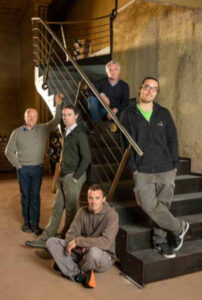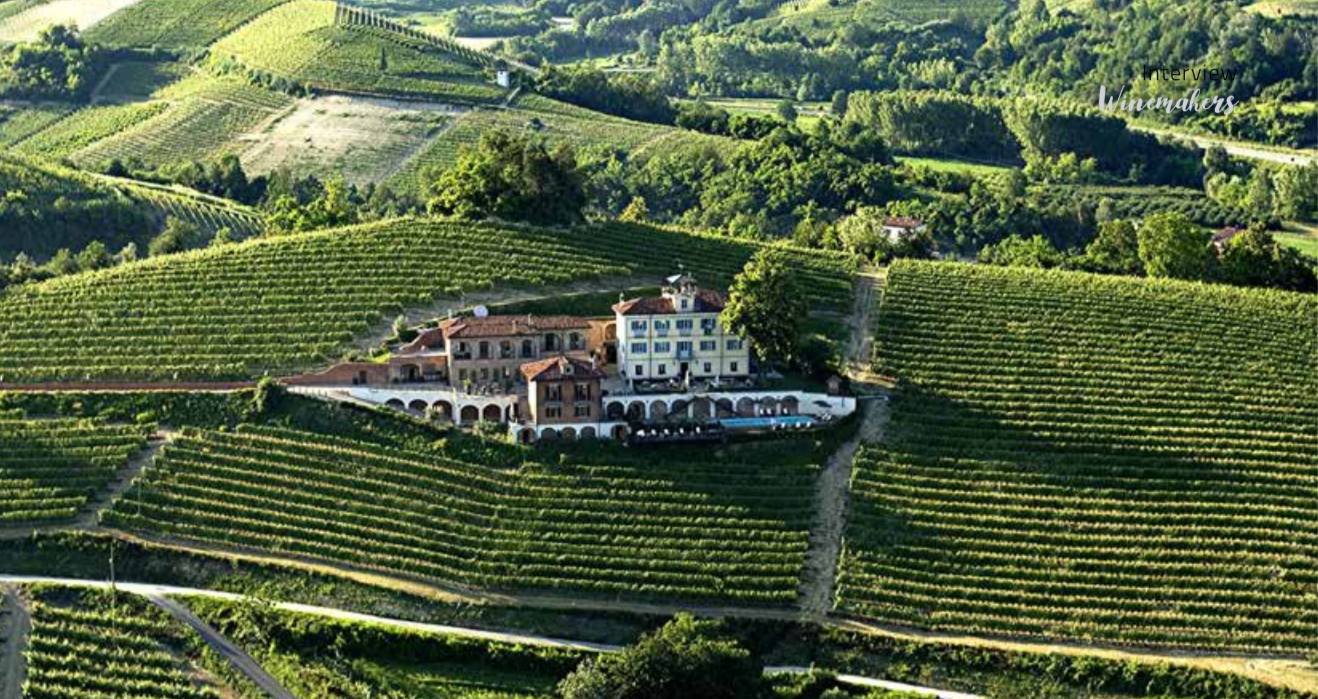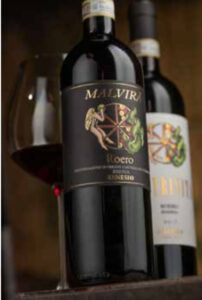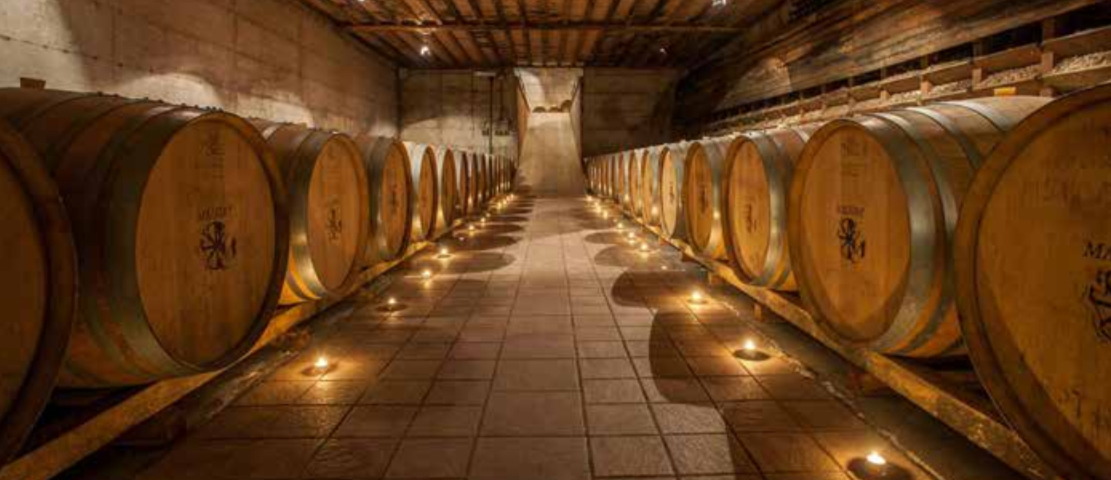AT THE ORIGIN OF ROERO ARNEIS, FOCUSING ON NEBBIOLO

Malvira’ estate occupies a special place in the Piemonte region. It was at the origin not only of producing of dry white wine from Arneis, but also of the name of the grape. Now, it offers singular wines from Nebbiolo, reflecting the typicity of Roero and Barolo terroir, as well as challenging in vinification its sparkling version. Giacomo Damonte, from the third generation of the family tell us about its history, its terroir and its projects.
VertdeVin: Can you present your family ?
Giacomo Damonte: My grandfather Giuseppe founded the winery in 1950s, my dad Roberto was responsible for winemaking and commercialization, my uncle Massimo – for the vineyard. In the third generation of the family, I am in charge of the winemaking and export and my younger cousins, Francesco and Pietro, for the vineyard. My mom and my cousin Lucia take care of the hospitality at Villa Tiboldi.
VdV: Why did Roberto Damonte start to produce the dry wine from Arneis ?
G.D: This is a funny story, which happened in the 70s. My grandfather prefered to produce a traditional in the past fizzy and sweet Arneis. But my father wanted to experiment with dry Arneis and secretly took six 54-liter bottles “Damigiana” and found a restaurant, wanting to buy it. My grandfather got mad, saying, that nobody would like and buy a dry Arneis. Then, my farther showed him the money. This is how we started to make dry Arneis, and the consumers were quite interested in it.

VdV: Can you speak about the history of Arneis ?
G.D: Roero Arneis DOC was established in 1989, and DOCG – in 2005, but Arneis was cultivated in Piemont for centuries. “Arneis” is the modern Italian name, derived from its latin name “Reneysium”, mentioned in an ancient document dated by 1478, which the noble family of Counts of Roero, (who gave the name for the DOC), provided to us. Grapes were cultivated inside a property Renesio (also derived from “Reneysium”), so the vine and the wine inherited it. In the past, Arneis was a wine to drink in 1-2 years. Its small part (5%) could also be blended with Nebbiolo, probably, to make red wine more approachable. Arneis had to be planted in a vineyard in order to attract birds to eat its grapes, rather than those of Nebbiolo. For producing white wines, winemakers of Piemont preferred Favorita grape variety, because it is more productive and easier for vinification, than Arneis. But with the improving of technologies, winemakers started to use Arneis and not Favorita for their white wines.
VdV: Could you speak about the terroir of Roero, which make its wines from Nebbiolo different from Barolo ?
G.D: Indeed, Nebbiolos from Langhe, Barolo and Roero are different, because of different microclimates, formed by the type of soil and expositions on the hills. Nebbiolo from Roero is elegant, soft and refined, yet powerful, but not as muscular as Barolo from Serralunga or Montforte. It is explained by lighter and sandier soils of Roero, lower hills and a different water supply. Not only the viticulture, but also the vinification in Roero is different from Barolo. With a longer maceration, in Roero, we can have a similar to Barolo level of tannins, but they will be softer and more approachable. So a young Roero, which we make by a long maceration of 6-8 weeks with long aging in large oak vessels, will be open, easy drinking. This offers to consumers, accustomed for Pinot Noir, Syrah, Cabernet or Merlot a good initiation to Nebbiolo.
VdV: You have also bought a plot in Barolo in 2007 and produced your first vintage in 2009.

G.D: It is a part of our history, because we obtained the plot by marriage, not for commerce. My aunt Gianna, married with a man from La Morra, whose family owned vineyards in Barolo Boiolo, which he was looking to sell. Boiolo is a part of La Morra with a cooler soil, a significant water supply and on a quite high altitude. In the past, this area was used for Dolcetto and Barbera, but our family replanted it with Nebbiolo and started producing Barolo. I think it was a good decision, because here we can work on cool soil and not have problems of lack of water or burning of grapes in conditions of changing climate and rising temperatures.
VdV: Do you have projects for other cuvees or other grape varieties ?
G.D: We are rebuilding the historical property of Renesio, inherited from the Counts of Roero. We would like to renew a beautiful villa inside it and continue our project of Agroturismo. I would also love to continue with organic farming, despite its costs and difficulties due to the climate change. I also want to make a traditional method sparkling wine from Nebbiolo. We already produce such wine by Charmat method, and in April 2025 we will issue our first vintage of 100% Nebbiolo Rosé Brut Nature made by traditional method. Nebbiolo is difficult to work in sparkling version, because you can extract too much tannins, but I think, it can be a great wine. From the next year it will be in DOC Nebbiolo d’Alba Spumante Rosé Metodo Classico.
VdV: Do you feel some challenges in the vineyard due to the climatic changes ?
G.D: Yes, when I was a child, Nebbiolo struggled to ripen fully, and now we have burned grapes sometimes. We have to adapt our work in the vineyard and in the winery to face these challenges, such as winemakers of the region did before us. We can’t stay on the similar quality product, if we do not understand the actual needs of the vines and don’t adapt our approach.
VdV: Could you explain labels on your wines ?
G.D: The labels are connected to the name of the winery. Its first name was “Damonte Giuseppe”, but the people of our village called it “Malvira”, meaning “badly turned”, because my grandfather’s house was the only farmer’s house, which backyard faced north, and not south as the others. This is why our label is inspired by the Tarot card of the Wheel of Fortune, which will drive you to the good side, if you were born on the bad one. The Wheel of Fortune as the main logo. For labels of Single Vineyard wines we also used Tarot cards (the moon, the lovers, the chariot, the queen, the world) and added The Wheel of Fortune in the back, because it is the symbol of the family.
Thanks to Giacomo Damonte for sharing his time and passion.

